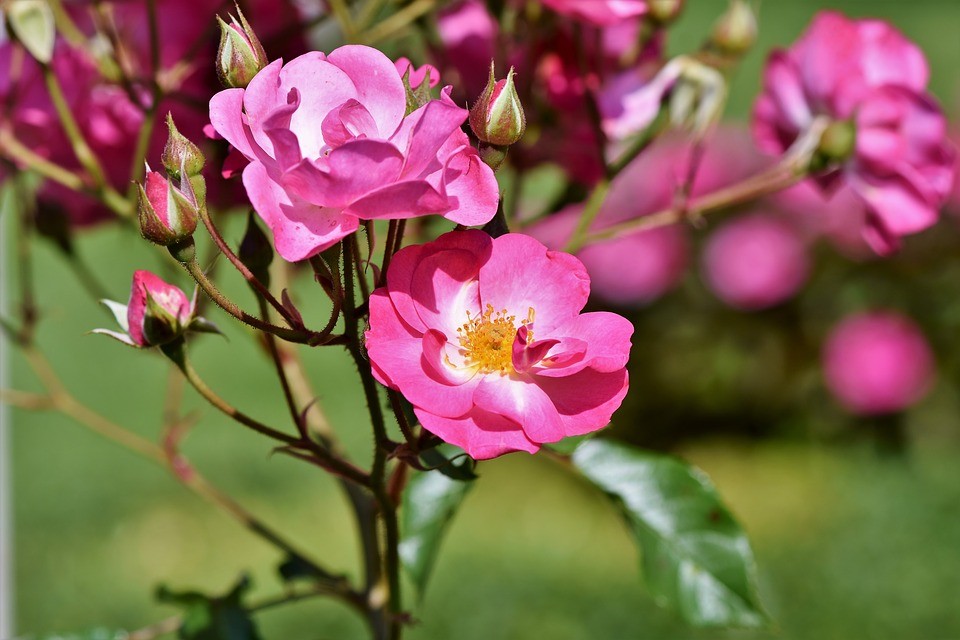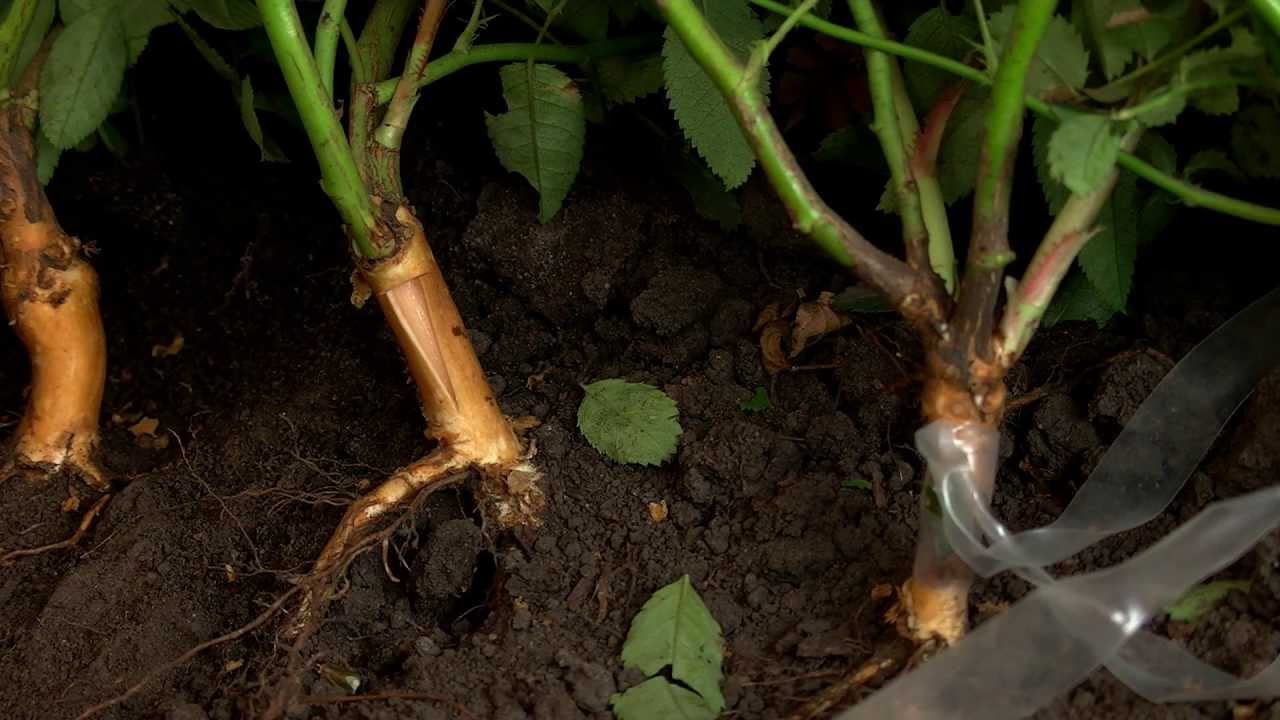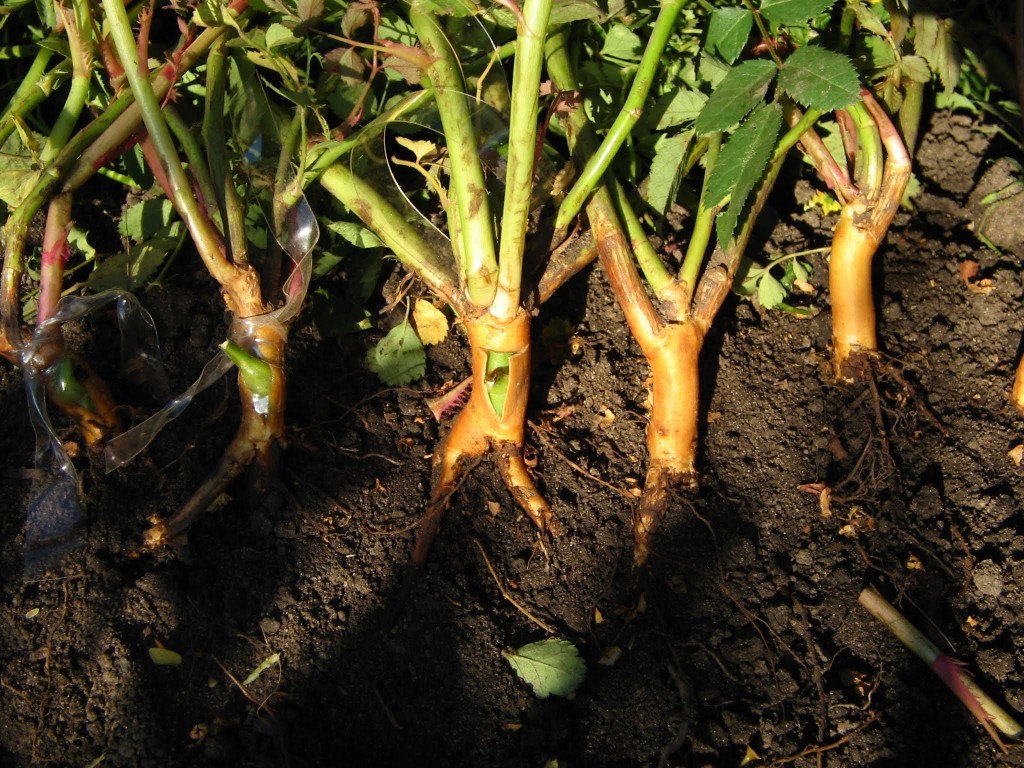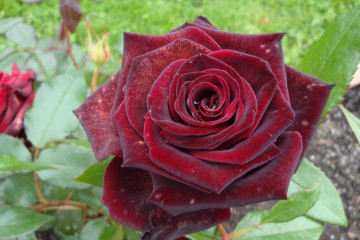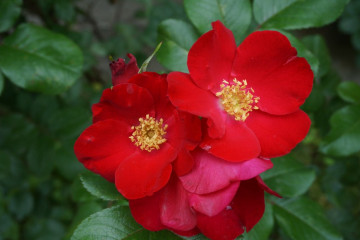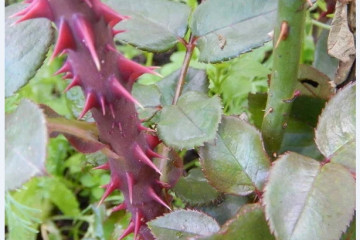How to plant a rose with a handle to a rosehip
Content:
Growing roses in the garden requires special knowledge. To get the right culture at home, you need to know how to graft a rose into a rosehip. Using this method, you can get an attractive rose garden in a short time without large financial costs. The process is not complicated, however, if simple recommendations are not followed, the scion may not take root well.
Grafting a rose on a rosehip
A plant grafted onto a rosehip does not lose its characteristics. In the process, it is important not only to prepare the necessary material, but also to comply with the planting time.
Is it possible to do this, why are they grafted onto a rosehip
Rose grafting is carried out on crops that belong to its family. Rosehip is a distant relative of the rose, so using a graft on a wild bush allows you to get a healthy seedling. Summer residents can also vaccinate on bushes of other roses, however, rose hips have the following advantages:
- the plant is resistant to diseases;
- with proper care and timely pruning, all the strength of the plant goes to the development of the bud;
- rose hips tolerate low temperatures well;
- the root system branches, this allows you to do several grafts at the same time;
- you can plant several types of roses at the same time on one bush.
Rosehip is found everywhere. If necessary, the culture can be planted in the garden and does not grow with regular pruning. However, when using such a material, sometimes a problem arises when the rose hips form shoots. To prevent this from happening, it is necessary to carefully examine the bush in the first few years after planting in a permanent place of growth.
Terms of vaccination
In order for the grafting of roses to be successful, it is necessary to observe the optimal timing of the work. This can be done in spring, summer and winter. It is necessary to consider each period individually:
- the spring period is considered the most suitable. The procedure is carried out in mid-March, when the buds wake up, but there are no leaves on the shoots yet;
- summer vaccination is carried out at the end of August. The stalk takes root and gains strength during the winter. In the spring it can be transplanted as a separate bush;
- the winter process is very complex and rarely used. The optimal time is the beginning of winter.
How to plant a rose in the summer: step by step instructions
To figure out how to plant a rose on a rose hip in the summer, you must first prepare all the necessary tools and materials. For the process you will need:
- a sharp knife or medical scalpel;
- alcohol;
- thin plastic tape;
- garden shears.
After everything you need to be prepared, it is important not to miss the right moment. It is best to vaccinate from mid-August to September 10. Otherwise, the result will be unsatisfactory.
Rosehip selection and preparatory work
Young rose hips are not used for budding. Grafting is best done on a developed root system.First, you need to carefully examine all the shoots and leaves of the plant. The shoots should be free of traces of disease and mold. After the bush is selected, it is necessary to prepare a place for grafting:
- in the root area, carefully remove the soil, freeing the root collar;
- examine the bark on the roots. The ideal option is a light shade of the bark, without dark spots;
- trim off any excess shoots that may interfere with the grafting process using garden shears.
In the process of preparing rose hips, it is necessary to use hand protection. There are small thorns on the shoots of rose hips, which, getting into the human body, can cause a purulent process.
To find out how to make a blooming rose from a rosehip, you need to choose the right material. A faded bud with dormant buds is used. The rose is carefully trimmed at an oblique angle. The faded bud and leaves must also be removed.
Vaccination process
To understand how to plant roses correctly, you should adhere to the following scheme:
- All thorns must be removed on the prepared scion.
- The root collar of the dog rose is cleaned of dirt and gently handled with a damp cloth.
- The scalpel or knife must be cleaned with alcohol. This will disinfect the instrument and increase the survival rate of the kidney.
- The kidney is carefully cut off so that a small shield, consisting of the bark, remains;
- A pocket-shaped incision is made on the root collar, where the scion is inserted.
- The vaccination site is tightly pressed and wrapped with a thin plastic tape.
- The place is carefully wrapped with polyethylene so that air does not enter. The root is covered with soil.
T-incision grafting, budding
Grafting a rose on a rose hip in the summer can be carried out in another way - using a T-shaped notch. This method is carried out in compliance with the following algorithm of actions:
- A T-shaped incision is made on the prepared stock.
- The kidney is carefully trimmed so that there is a small elongated flap.
- The edges of the T-shaped incision must be folded back and the kidney inserted.
- Carefully wrap the grafting site with polyethylene.
This method is much easier, when wrapping with polyethylene, there is no need to press the kidney with your fingers. It is fixed by the edges of the incision.
How to get a standard rose
Standard roses differ from bush roses in lush flowering and unusual appearance. Small trees are covered with double buds that bloom throughout the summer. To grow a stem, you should use a rose hip, which is called a dog rose. Such a plant has strong shoots and is suitable for growing trees.
The budding process is carried out according to the following step-by-step instructions:
- The rootstock must be carefully examined and the most durable and even shoot should be chosen.
- The rest of the branches are all removed with garden shears.
- The height of the shoot for grafting must be at least 1 meter.
- The lateral stems and buds are carefully trimmed with a knife.
- The shoot of a varietal rose is carefully cut.
- The kidney is trimmed with a sharp scalpel.
- A T-shaped incision is made on the stock. The inoculation height must be at least 1 meter.
- The kidney is carefully inserted into the incision and carefully wrapped with tape.
To protect the vaccination in winter, the place of budding must be additionally insulated with agrofibre or old things.
The budding of the standard plant is carried out at the end of summer. In the spring, it is necessary to carefully inspect the grafting site and, if necessary, transplant the finished seedling to a permanent place of growth.
In order for the standard rose to retain its characteristics, the following recommendations must be observed:
- within 4 days before grafting, the stock is thoroughly watered;
- use only fresh cuttings;
- it is necessary to plant in a permanent place of growth in the first half of May;
- after budding, it is necessary to water the culture daily.
Grafting a rose on a rose hip in the fall, at the beginning of winter
If it was not possible to carry out budding in the summer and spring, late autumn or winter is suitable for these purposes. The procedure can be applied until mid-December, but the risk of kidney death is very high. To carry out budding, it is necessary to prepare the cuttings in advance. To do this, at the end of November, annual shoots are cut and placed in a paper bag. Store the bag in a cool place.
The algorithm of actions during budding is the same as in the summer. However, there are a few things to keep in mind:
- in winter, to prepare the root collar, it is necessary to use hot water, which is poured over the soil around the bush. The ground will become soft and you can easily peel the root;
- it is necessary to completely cut off the bark from the root collar. A kidney is placed in the place of the cut and carefully wrapped with film and electrical tape;
- the place of budding is carefully sprinkled with soil and fallen leaves.
The budding site is not checked until spring. In the spring, after sap flow, the bud will wake up and begin to form a young shoot.
Caring for grafted plants
After the vaccination is done, it is necessary not to unwind the film for 3-4 weeks. The bush is watered regularly. After this time has elapsed, the film is carefully removed and the grafting site is inspected. If the bud is green, then the scion has taken root. However, it should be noted that, depending on the budding period, the care may differ:
- after budding in winter, the film is not removed until mid-April. After that, carefully the root system is opened and the vaccination site is freed;
- if the material was grafted in the spring, care must be taken to thoroughly insulate the rosehip root system. If the weather conditions are warm, the film is removed after 3 weeks;
- for buds that were grafted in late summer or autumn, it is recommended to leave the film until spring, since young shoots are very weak and may not tolerate a sharp drop in temperature.
After the material has begun, it is important to transplant the young bush correctly. Transplanting to a permanent place of growth should be carried out only after the young shoots have grown by 15 cm.It is important to take into account that the grafting site is very weak and, if handled incorrectly, is quickly damaged.
Transplanting a seedling
The transplant is carried out as follows:
- Using a shovel, carefully dig out the bush, being careful not to damage the root system.
- With the help of a secateurs, separate the root system on which the bud is grafted.
- Prepare a planting hole and plant a seedling. The depth of the hole should be higher than the level of the scion.
- Tamp down the soil carefully.
Watering a young bush is necessary every other day. After new shoots appear, complex fertilizer can be used. It is also recommended to promptly remove weeds, which are often the cause of pests. In the future, care for the culture is carried out as for an ordinary adult rose.
To grow a rose garden in the garden, it is not necessary to spend money on the purchase of planting material - you can graft a rose on a rose hip. This procedure requires some knowledge and often not all grafts take root in beginners. However, after gaining a little experience, everyone will be able to regularly increase their flower garden and grow not only bush roses, but also standard ones.
